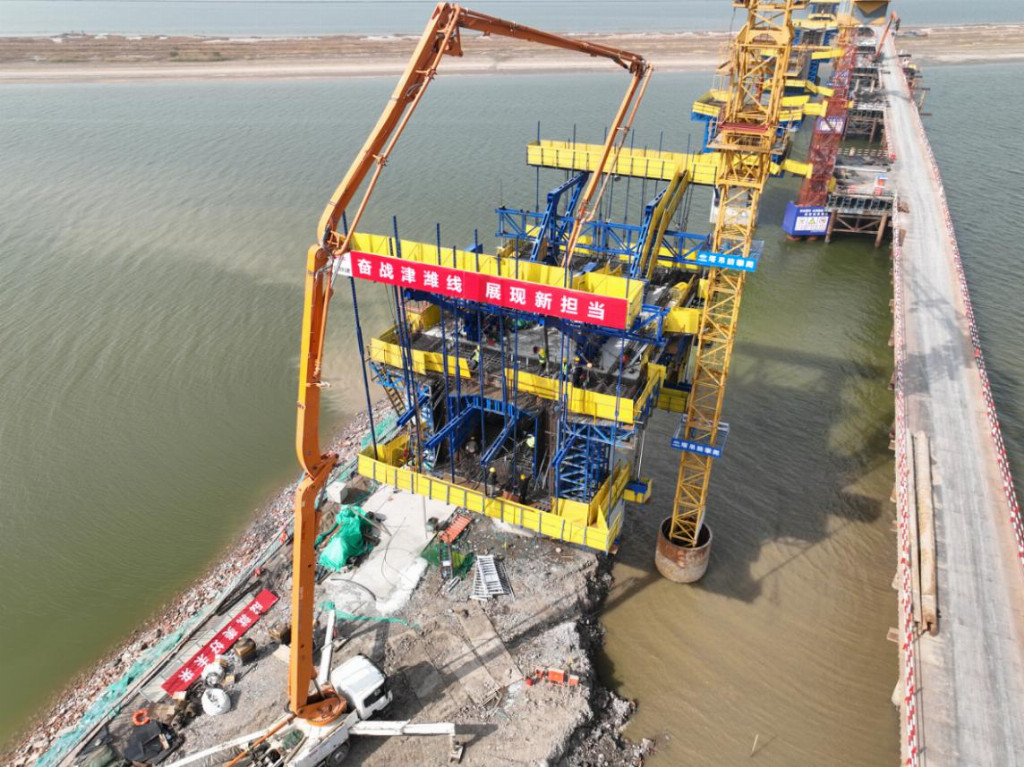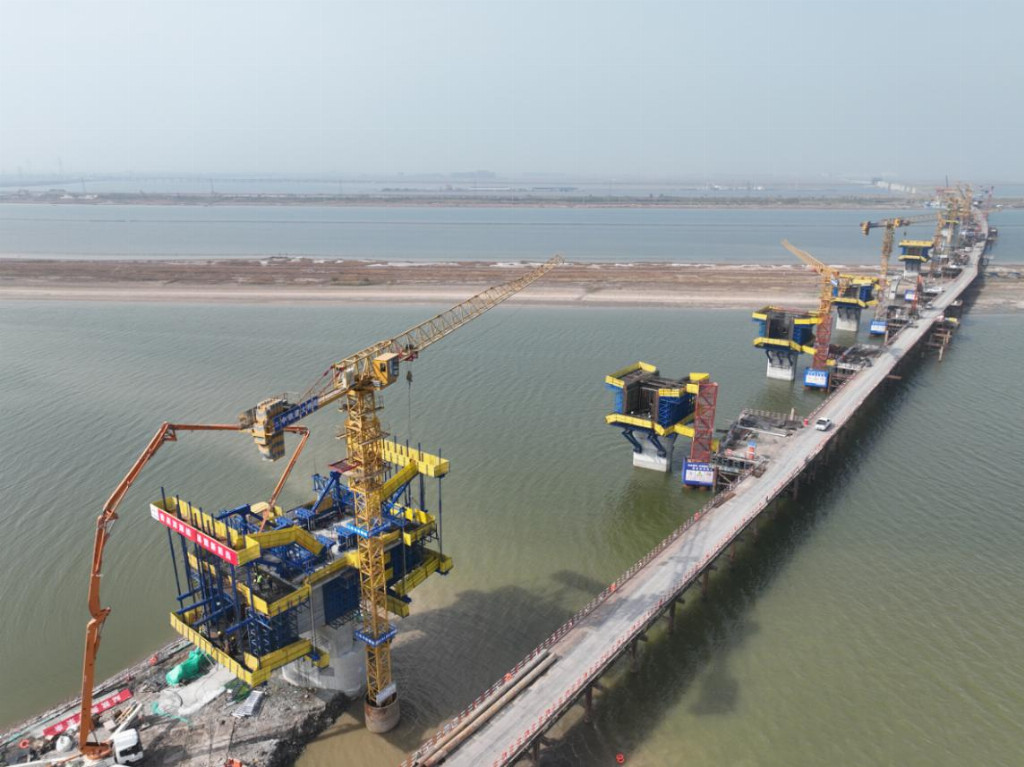CRCC Major Bridge Makes Significant Progress on Tianjin-Weifang High-Speed Railway
Recently, the construction of the upper structure of the continuous beam section of the Binhai Extra Large Bridge of the Jinwei High speed Railway Project, which was constructed by China Railway Construction Bridge Bureau, has entered a new stage. This marks the beginning of a new phase for the key and difficult project of the project, which is the construction of the single stream and reduced river section.

The Duliujian River is located in the southern part of Tianjin and is the main estuary of the Daqing River system in the Haihe River Basin. It has a total length of 67 kilometers and a drainage area of 511 square kilometers. The area it flows through is mainly a marine alluvial plain with low-lying terrain. Shallow disc-shaped depressions and ancient river bed highlands are distributed on both sides of the river, undertaking the flood discharge task of the southern part of Tianjin and the Daqing River system. Its downstream is also connected to the Beidagang Wetland, which is an important water source supply area for migratory birds.
The Jin Wei high-speed railway project is located in the Binhai New Area of Tianjin, China. It crosses the Duliujian River using an elevated bridge at the river pier number 63+950 (the inflow gate of Duliujian River is 0+000, the same below). The high-speed railway bridge adopts a 6-link (73+73+73) meter rigid frame continuous beam layout, spanning a projected length of 1314m and intersecting with the river at an angle of 60 °. In order to meet the construction needs, a 1.23km steel wharf was erected to cross the Duliujian River. The river crossing bridge is equipped with 19 piers, including 15 in the water and two on each bank crossing the road.

The zero block and hanging basket construction are currently underway in the Duliujian River section. To ensure the construction period, 17 sites are being constructed simultaneously, including 12 tower cranes in the river channel, 5 cranes on the steel wharf, and 189 workers working simultaneously. Based on the characteristics of simultaneous construction of multiple rigid structures and site conditions, the project department strengthens the construction organization design, formulates detailed and scientific construction organization design, reasonably arranges the construction sequence, resource allocation and construction progress, and ensures the orderly progress of each section of construction; Strengthen technical disclosure, organize technical personnel to conduct detailed technical disclosure to construction personnel, so that construction personnel have a clear understanding of construction technology, quality standards, and safety precautions, and ensure that construction operations meet requirements. Strictly inspect materials and equipment, conduct rigorous testing and acceptance of raw materials, components, and equipment entering the construction site, ensure their quality meets design requirements, and regularly conduct comprehensive inspections and debugging of construction equipment. In terms of safety management, establish a safety management system and set up a dedicated safety management team; Strengthen safety education and training, provide safety education and training to all construction personnel, and enhance their safety awareness and self-protection ability. Set up safety protection facilities, such as fences, warning signs, guardrails, safety ropes, etc., and equip every worker with life jackets to avoid safety accidents; Strengthen on-site safety inspections, promptly identify and eliminate safety hazards, focus on monitoring key areas and processes, and ensure construction safety. The next step for the continuous beams on the Duliujian River will be to carry out basket walking simultaneously, which is rare in China for multiple baskets to be constructed simultaneously in river channels.
The new Tianjin Weifang high-speed railway is an important component of the "Eight Vertical and Eight Horizontal" Beijing Shanghai auxiliary channel and coastal channel in China's "Medium - and Long Term Railway Network Plan". The construction of the project will further support and lead the coordinated development of Beijing Tianjin Hebei, improve the comprehensive transportation system of the Beijing Shanghai channel, and promote the coordinated development of the Beijing Tianjin Hebei region, Shandong Peninsula, and coastal areas.
- The project in Zengcheng, Guangzhou is progressing smoothly.
- Using Router as DHCP Server: How to Configure
- Galaxy Macau Unveils World’s Largest Bentley Flying Spur Mulliner Fleet, Elevating Guest Experiences to New Levels of Luxury
- 2025 Floral Wisper Along the Silk Road:
- 70th main tower of Shenjiang Railway's Modaomen Waterway Bridge successfully top
- Nanfan Silicon Valley" in south China's Hainan Province, February 23. 2022.











